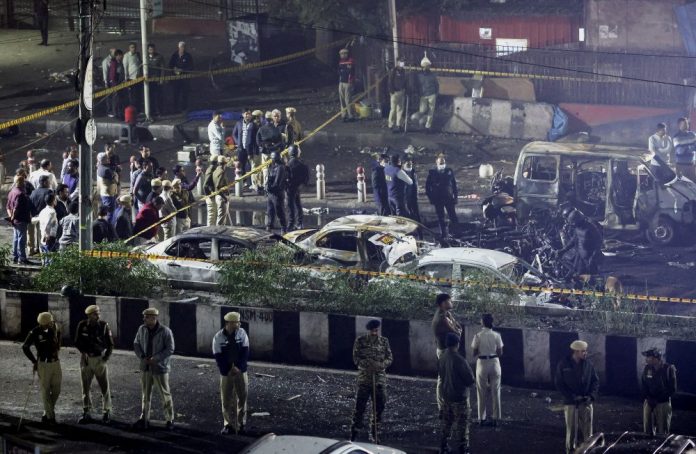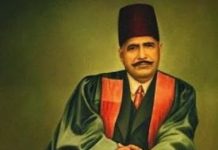
BY Muhammad Mohsin Iqbal
In the 1980s, Indian cinema held a unique charm that transcended boundaries and classes. Films of that era were creative and full of imagination, mirroring reality, with story writers, lyricists, and directors serving as the true masterminds behind their success. Watching movies on VCRs was a modest yet delightful pastime for families. Children would memorize dialogues, adults would hum the songs, and the silver screen would reflect emotions that resonated with real life. It was a time when storytelling mattered, creativity was genuine, and cinema served as a bridge of culture and sentiment. But as time went on, the heart of Indian cinema began to fade. The stories lost their soul, the direction became superficial, and films that once mirrored society’s aspirations turned into tools of manipulation and propaganda.
Today, the decline of Indian films is not just a matter of art losing its essence—it is a reflection of how politics has swallowed creativity. The scriptwriter, director, and producer of India’s latest “blockbusters” is none other than Narendra Singh Modi. His films are no longer about love, sacrifice, or humanity; they are crafted to exploit emotions, ignite hatred, and convert tragedy into political mileage. These films usually premiere right before elections, ensuring that fear replaces reason and manipulation overshadows morality. The irony is that most of Modi’s election-season films have flopped miserably, but the cost of their failure is measured not in box-office returns, but in human lives. And whenever his cinematic politics falls flat, Pakistan becomes the convenient villain in the script.
India’s opposition parties, once the conscience of the nation, have turned into passive spectators. The media, which once celebrated the truth, now serves as an amplifier for political fiction. A few days ago, another such film was released—this time titled “The Red Fort Blast”. The tragedy that unfolded near Delhi’s Red Fort Metro Station on November 10, 2025, left eight innocent people dead and more than two dozen injured. The sorrow of those who lost their loved ones is immeasurable, yet their grief has been turned into a political screenplay. As facts began to surface, glaring contradictions appeared between what eyewitnesses described and what the government declared.
Eyewitnesses claimed that the car involved in the explosion was a Suzuki Maruti. One of them, who helped rescue victims, even shared this detail in a viral video. Early local reports also confirmed it. But soon, the official narrative changed—the Home Minister, supported by the “Godi” media, confidently asserted that the vehicle was a Hyundai i20. The National Investigation Agency and the National Security Guard were immediately deployed to investigate what was now branded the “Hyundai i20 blast.” Strangely, not a single frame of CCTV footage has been released to the public to verify the claim. The mismatch between ground reality and the government’s version has raised uncomfortable but necessary questions; Was evidence tampered with? Were witnesses silenced? Why does the truth need to be hidden if there is nothing to hide?
Then comes the issue of the car’s ownership—a mystery in itself. Some reports suggest the vehicle was registered to a man named Nadeem from Faridabad, while others name Salman, who allegedly sold it recently but whose name still appeared on the registration certificate. Yet the official version abruptly introduced a third name—Tariq from Pulwama, Jammu and Kashmir. Overnight, the story jumped from Haryana to Kashmir, invoking memories of Pulwama 2019, as if the script demanded an emotional trigger. No clear proof, no verified trail, only sensational claims. The orchestrated confusion created by shifting names and locations appears deliberate, serving a single political objective—to stir fear and win votes.
The nature of the blast itself remains unclear. Was it a terror attack or an accidental CNG explosion? Early responders suspected the latter, but before forensic reports could confirm anything, the media had already branded it terrorism. In genuine terror operations, perpetrators escape; in this case, all occupants of the car perished instantly—an unusual pattern that often appears in fabricated operations. The death toll was quickly fixed at eight, and silence followed. No subsequent updates, no detailed investigation, only an echoing narrative that suited political needs.
History bears witness that whenever facts contradict the ruling party’s narrative, the script is swiftly rewritten. From staged encounters to communal flare-ups, the pattern remains consistent; invent an enemy, inflame emotions, and harvest votes. This manufactured fear serves multiple purposes—it stokes Islamophobia, maligns Kashmiri citizens, distracts the public from real issues like inflation and unemployment, and inevitably points a finger at Pakistan. It is a cycle where tragedy is commodified, truth is suppressed, and humanity is sacrificed at the altar of politics.
What is most painful is not merely the deceit but the desensitization of society. Twenty-six families have been shattered, eight lives have been lost forever, and yet the national discourse revolves around political strategy rather than compassion or accountability. These victims deserved justice, not propaganda; truth, not manipulation. But in Modi’s India, even grief has become a staged act, and the lines between cinema and statecraft have blurred beyond recognition.
India once taught the world that films could heal, unite, and inspire. Today, its ruling establishment uses them to divide, deceive, and dominate. When art becomes a weapon and politics becomes theatre, the nation loses both its moral compass and its creative soul. The Red Fort blast, like many of Modi’s pre-election productions, may win temporary applause from blind followers, but it will ultimately be remembered as another flop—both at the box office of truth and in the conscience of humanity.

















